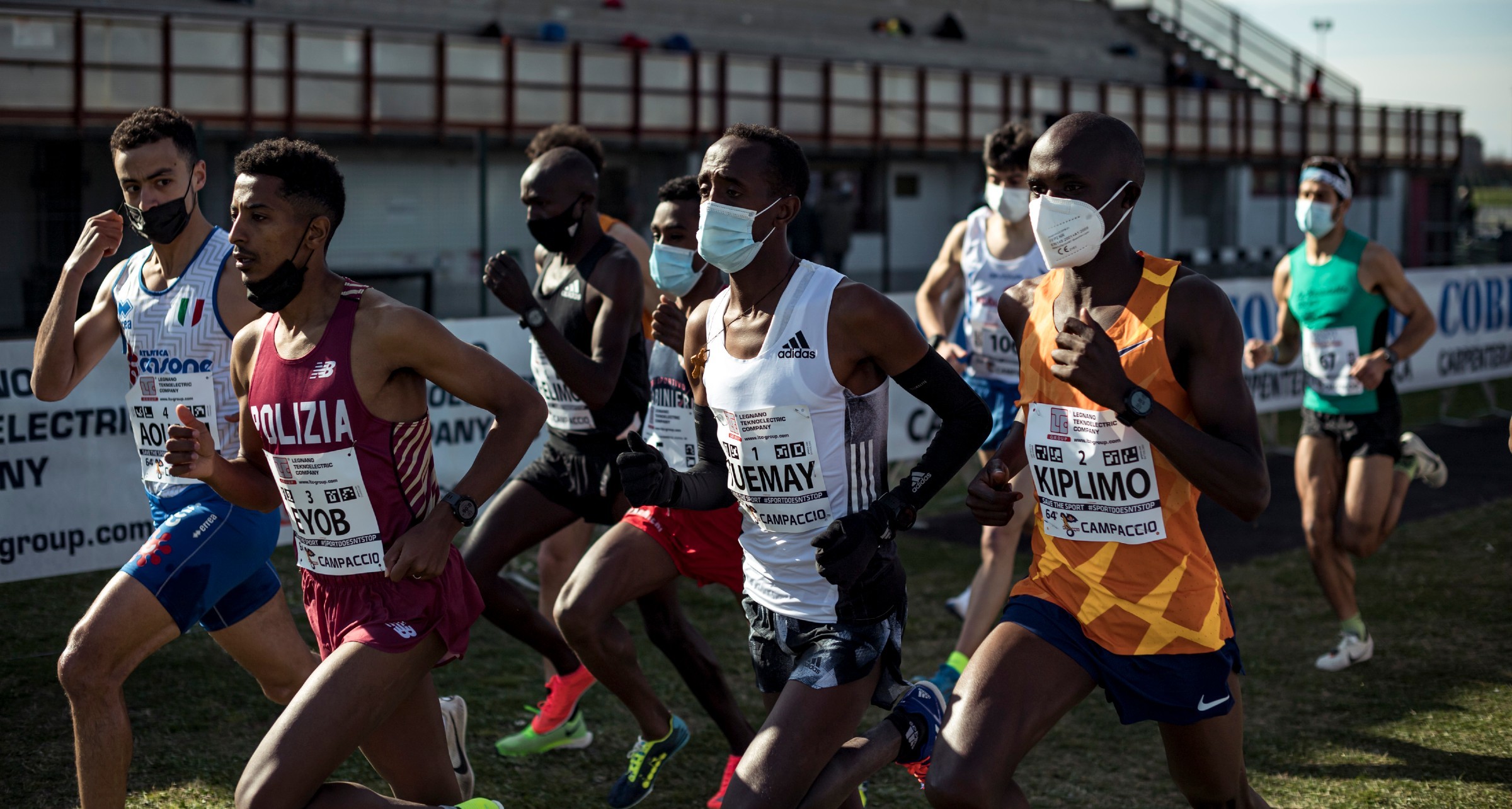
Clinical Emotion
Cross Country In A
Time Of COVID
Words and Photography by Phil Gale and Emmie Collinge
The competitors stand in formation, lined up and geometrically spaced, they look more like a military unit on parade than athletes preparing to race. The starter raises his pistol-heavy hand ready to set the masked runners on their way. In doing so, he is restarting the Italian running scene during a pandemic. As fans and spectators we wonder, is this the new normal?
As with most cross-country races, nerves are high in anticipation of the impending effort. To the limited group of spectators, there are both similarities and differences to the racing we once knew. What racing once was, runners elbowing for position as they toe the line, has been replaced with ultra-diligent two meter spacing denoted by precisely positioned piles of white chalk, strictly policed, on the grass of this campo sportivo to keep runners apart. At least, that is how it is in Northern Italy. Twelve months on, the region that became the epicentre of infection, invites an air of clinical emotion. Body language betrays nerves while face coverings and hand sanitizing stations show precaution.
Competition in the time of COVID has been a sterile affair. The need to minimize infection has seen an elite-only version of sport that has been okayed by governments and governing bodies. World Record-breaking performances have been run on empty tracks and deserted roads. Competing in front of empty bleachers has become synonymous with our life under this virus. The silence where fans would normally be appears with the same passive dominance that COVID has on wider humanity.
Here in Italy, where emotion is everything, a defiant cry has beckoned amateur racing to begin again especially when it comes to iconic running races. A year ago, the population of 60 million were not even allowed to run outside of their homes. For two months, everyone was indoors. Then in May 2020, Italians were set free to run, but were restricted to their local neighbourhood. Over the summer it loosened, but barely. Since November, they’ve been back within their local neighborhood boundaries. Did the restrictions affect training? Did they affect motivation? Not from what we see today.
Campaccio is an iconic international cross-country race, held just north of Milan. It lives by the credo, ‘come sempre, per sempre’ or ‘as ever, for ever.’ This emotion drove the statement that – as in the previous 63 editions – 2021 would not be elite only. Of course, the two main events – the televised ones – would be the international men’s 10 km and women’s 6km, but it would still cater to age categories and amateurs. For many, Campaccio would be the only cross-country on the calendar this year.
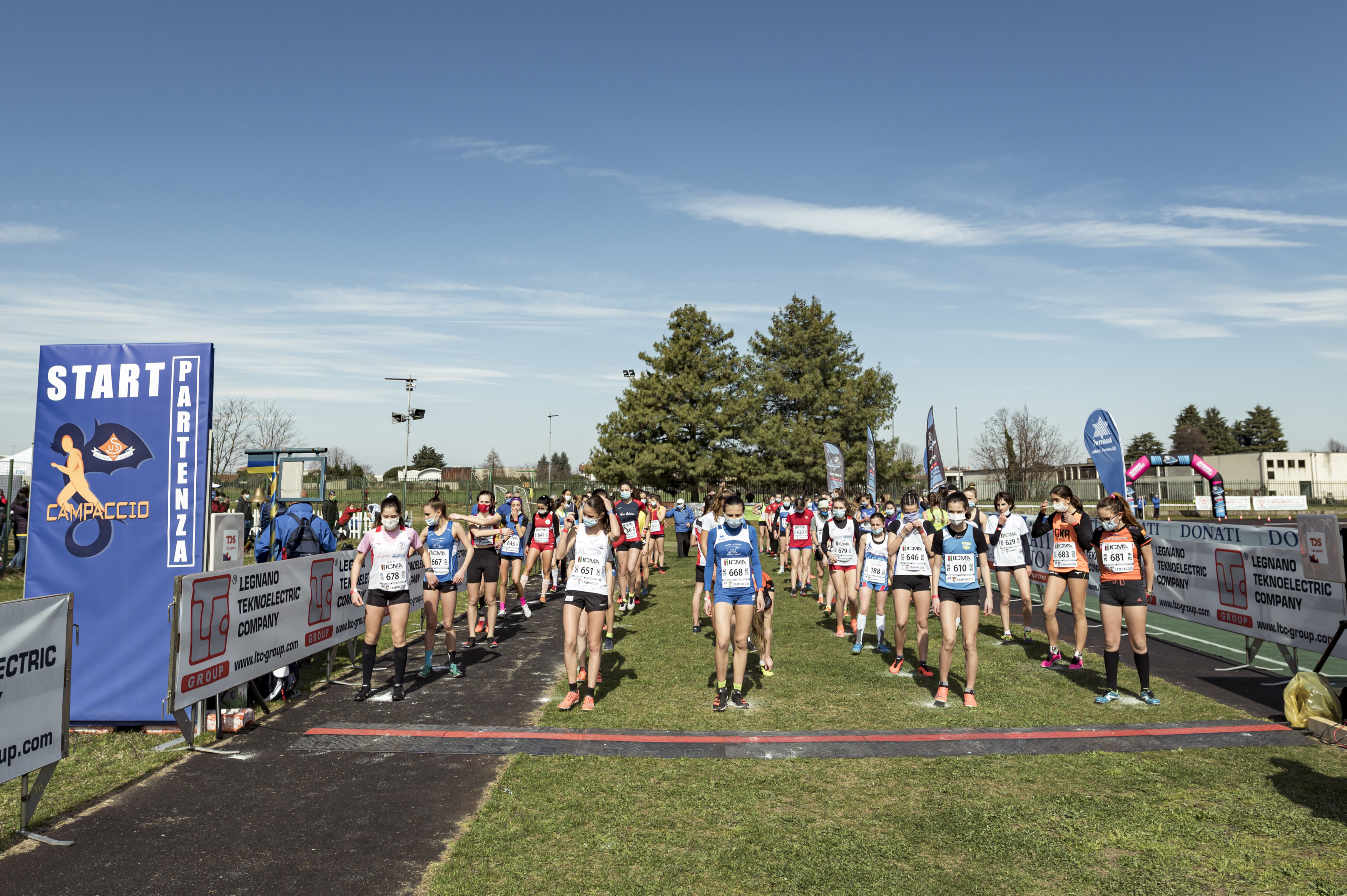
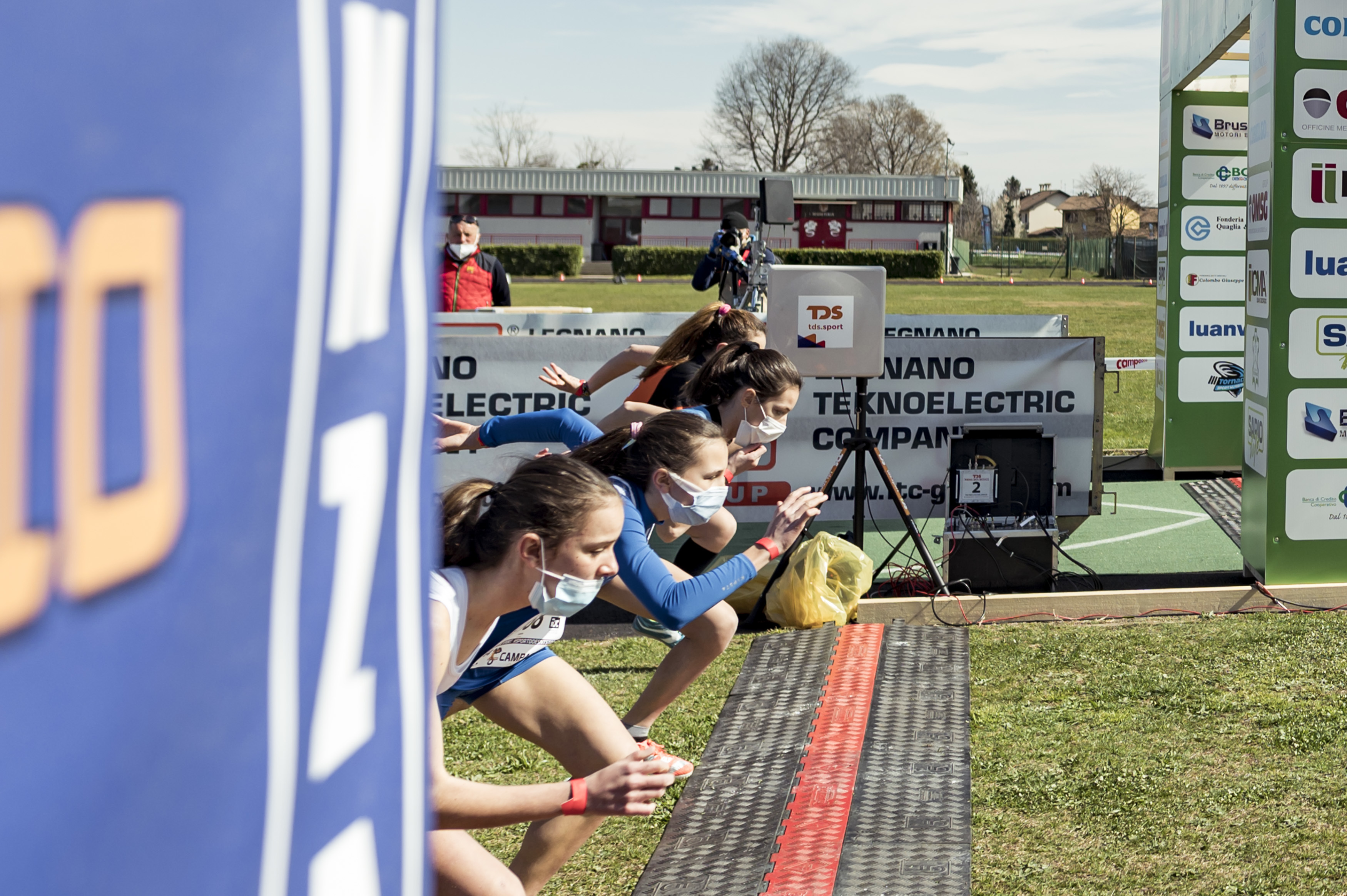
The Clinical
With such a big proposition, it was clear that serious logistics needed to be put in place. Emotion alone wouldn’t get you very far. Italy finds itself in the grips of consistently high and rising infection rates, meaning the race organizers needed to create a protocol that limits transmission risk to receive permission for the race to go ahead. Tito Tiberti, Campaccio Race Director for the past five years, shouldered this responsibility, but as Middle-Distance Manager for the Italian Athletics Federation he’s in a privileged position. He knows the rules, inside and out. Over a video call three days before Campaccio, a masked Tito explains the measures with methodical thoroughness:
“The aim is to bring the public and running fans a Campaccio that is not only at the forefront on a competitive and organisational level, but also in the sense of it offering everyone courage to get through this situation, hinting towards a more normal future. There was never a thought of cancelling the race, or even running one virtually, that is why we’ve worked hard to create a race that will be organised to a level that hints towards the future processes of what both the Olympic committee and World Athletics Organisation will have to do,” Tito explains.
He’s inside quarantine, having returned from the European Indoor Championships in Torun with COVID. The Championships have since turned into somewhat of a super spreader event, so armed with this first-hand experience of how badly it could go, it is clear that Tito is committed to making sure Campaccio will not follow in the footsteps of its elite brethren.
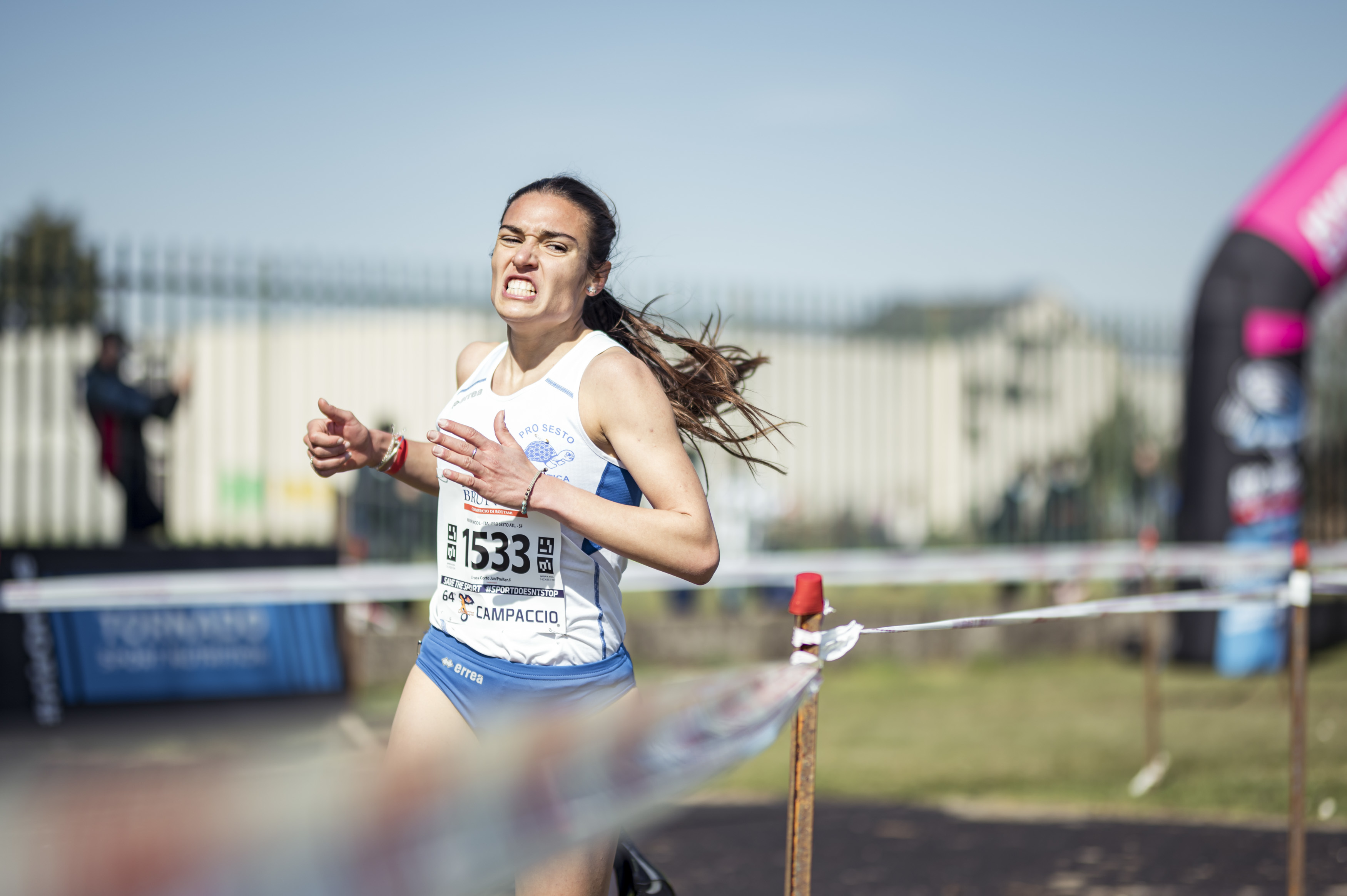

What did that mean for the event?
Everyone who is an elite runner, a member of the event staff or media, created a specific bubble, whereby everyone in these groups was tested for COVID (antigen rapid test) prior to being allowed anywhere. Everyone stayed in a closed hotel, where face coverings were mandatory and contact between groups was limited. With these precautions in place staff and media went to the event, while the international runners had a COVID safe shuttle prior to their races, where they then followed the protocol of the race site.
Tito took steps to reduce the risk of spreading COVID while knowing the amateur runners were more complicated to control. He eradicated age categories from U15 and below. He put a stringent set of requirements, rules and movement patterns in place for the participants to follow while on site. He created policies like self-certification, had limited numbers and mandatory face coverings (required for the first 200m and straight after the finish). Tito restricted access through a bracelet system and a socially distanced start grid through a socially distanced call up area. The entry numbers were already down due to the pandemic, taking one concern of Tito's plate.
The mechanical manner in which Tito rolled off the rules, could be interpreted as emotionless, but when he spoke about the ban on spectators, his expressions changed. Spectators are central to the race – and for the town. This race is the event in San Giorgio Su Legnano – so for Tito to encourage people to watch it on television, felt like a betrayal. The clinical manner is a means to an end: the end goal, Tito explained, is to save the sport and make a statement that outdoor sports can, and must, continue. Running the event behind closed doors (or fences, in this case) in 2021 was a sacrifice so that Campaccio could return stronger for everyone in 2022.
That passive dominance of closed competition ever-present, like the silent threat of infection.

The Emotional
This juxtaposition of clinical precaution and the raw emotion for racing was unmistakable at Campaccio. Tiny clusters of supporters shouted from behind the perimeter fence; their voices muffled by face coverings. Runners battled with the searing intensity of cross-country races, holding their face masks, pulling them down over their chins, or they clasped them onto their biceps. Number collection was conducted through protective plexiglass and the campo sportivo’s bleachers were recommissioned into a bag depository, athletes ushered in and out at breakneck speed.
Emotions while pinning on your number? Please, not here.
The presence of the local police and carabinieri – military police – on what seemed to be permanent patrol meant a constant reminder on everyone to follow the rules and do the right thing. A pair of local police commented with begrudging approval, referring to Tito by name, “The race director, Tito really knows the system, so we have to support the running of this event and so far, they’re doing everything correctly.” The first-aiders – the same volunteers featured on the news each evening driving ambulances rushing COVID cases to hospital – echoed a similar sentiment, “Provided they stick to the rules, this event should be allowed to happen; we need it, we need some normality.” The announcers reiterated a warning message to respect the rules with alarming regularity, at odds with their emotional descriptions of the races.
One category of those present, demonstrated equally as much passion for the historic race as the competitors. Unione Sportiva Sangiorgese, the stronghold of volunteers from within the local running club, who were on the ground making this race happen. They wore mainly blue coats with the distinctive club scarf looped around their neck. Many of them have been part of the action since 1957. This year, with the first day of spring falling on race weekend, there was palpable optimism in the air.
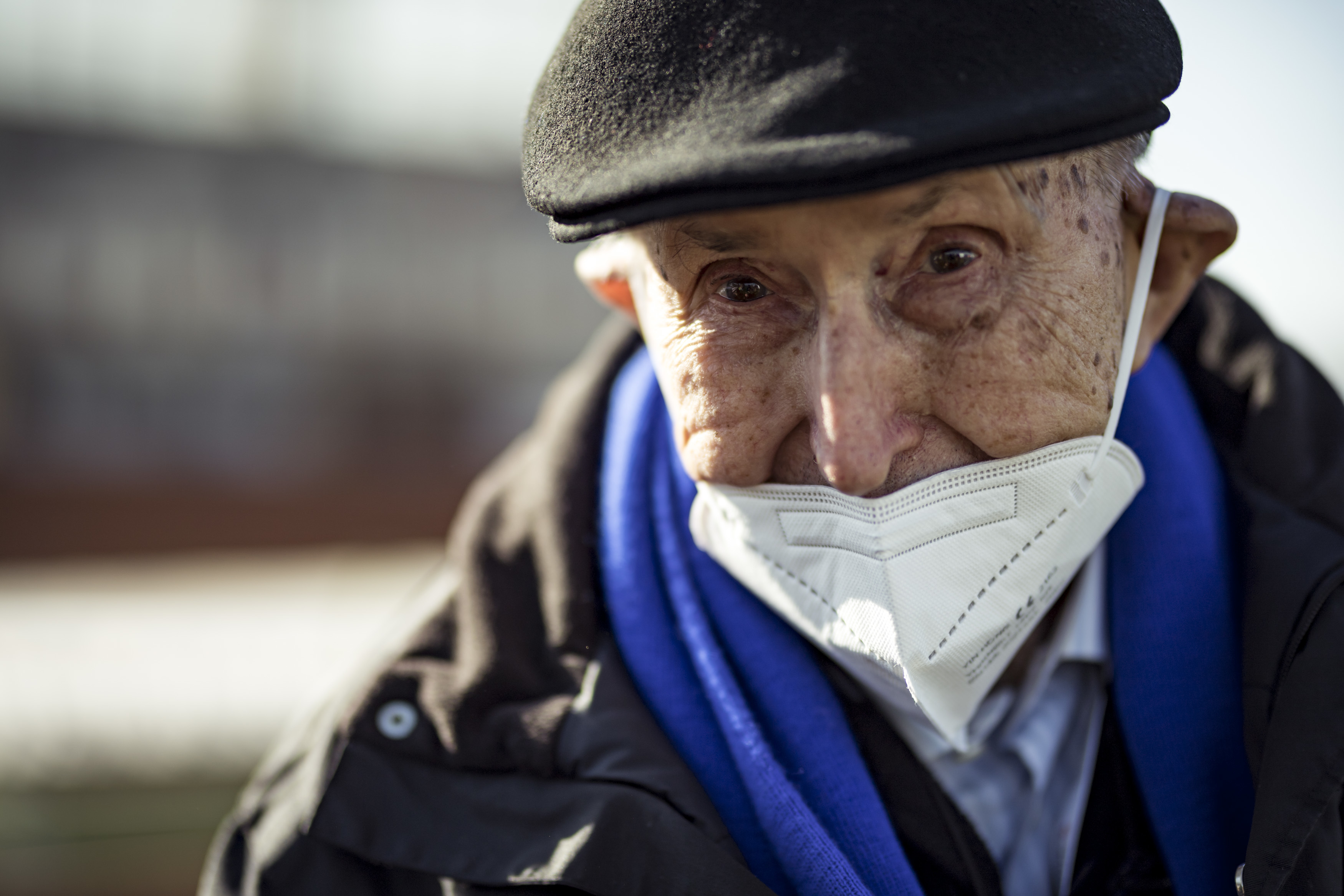
Never having missed an edition, 92-year-old former race president Livio Mereghetti is overrun by passion and pride on this day: “The very first edition was also in March so today makes sense. We’ve had it all here: rain, snow, freezing temperatures. We never cancelled. We needed to run the race.” When questioned about the real situation with COVID, Lombardy being one week into classification as a red-zone, deeming the strictest restriction due to significant infection rates, he is undaunted. “Look over there, there’s greenery. And over there, it’s green too. We’re outside where there is a lot less risk. Look at the runners, it is them we need to think of.” We ask how it feels to be one of the few spectators permitted on the in-field of the track and he informs us that “of course” he’s still working, even after celebrating his 92nd birthday on March 17th. At times he lowers his masks to be heard over the loudspeaker and seems unconcerned about his own age-related risks for COVID. Emotion takes precedence.
Further around the course stands Fiorino, an official for FIDAL Lombardia (Italian Federation for Athletics). He displays as much enthusiasm for racing as the runners. “I’ve been stopped for almost 12 months. Nothing. No races to go to, no work. I’ve been part of FIDAL for 38 years and it was just not right to have no races. But now we are back, and it’s great. Seeing the runners out here is where I want to be. The only sad thing is that the really young categories are not here. Though I do understand why; it is normally their parents who are the most difficult to control!” A smile unfolds over his face as he chats with us. His concentration split between our conversation and the race. It’s clear: he has a job to do.
With the future of the sport dependent on young runners, it was a shame to see categories cut from the lower end of the age scale. With the aim of keeping total numbers low, there was clinical reasoning behind the decision. Fewer youth categories meant less of an entourage.
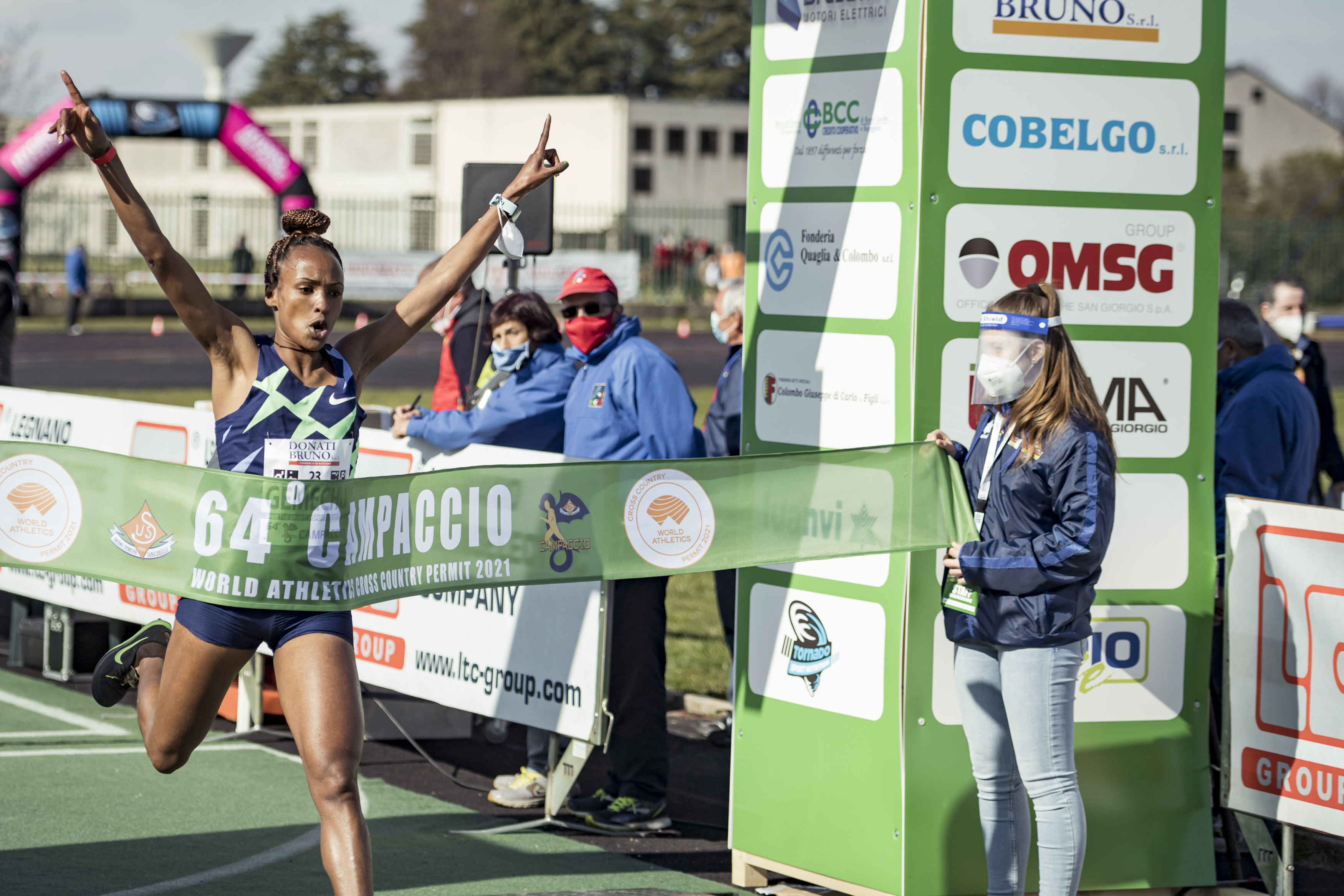
Those racing seemed oblivious to the wider impact of the adaptations. They embraced competition once again. From the youngest runners competing over two lactic seared kilometres, right up to the elites in the international event, it looked like lockdown left some steam for the runners to blow off. Even the reigning World Half Marathon Champion Jacob Kiplimo and Tsehay Gemechu ran with a different energy, as the two eventual winners put in big punches to surge ahead around the athletics track on the final lap.
As the runners were out on the course, it was easy to forget about the pandemic. Only the occasional flash of a carried face covering, or the stricter protocol that required speeding movement through the finish funnel, and the socially distanced podiums, reminded onlookers of our current norms. Those clinical moments aside, the amateur spirit was alive and kicking.
Adolfo Di Rocco and Giampaolo Gerbaz, both running in the SM 75 category, are overjoyed to be racing. “What a feeling to be back! I haven’t raced since February 2020, it’s just not right,” Adolfo says, moments after crossing the finish line from his 4km race. A committed runner for the past 47 years, this 78-year-old was outsprinted by his younger compatriot, the 77-year-old Giampaolo after battling stride for stride the whole race. “I’ve really missed this. It’s great to be back. Life has not been the same. It felt a lot emptier, and even though I’ve trained more than ever recently, running is about meeting people, sharing experiences, and racing,” Giampaolo comments. Clearly both of these veterans of the sport were full of endorphins only found through pushing themselves. “Have you really been training more? Me, on the other hand, I struggled to stay motivated,” interjects Adolfo, “But now we’re back, aren’t we? Bravo to the organizers for taking the step to put this on and giving us another chance.”
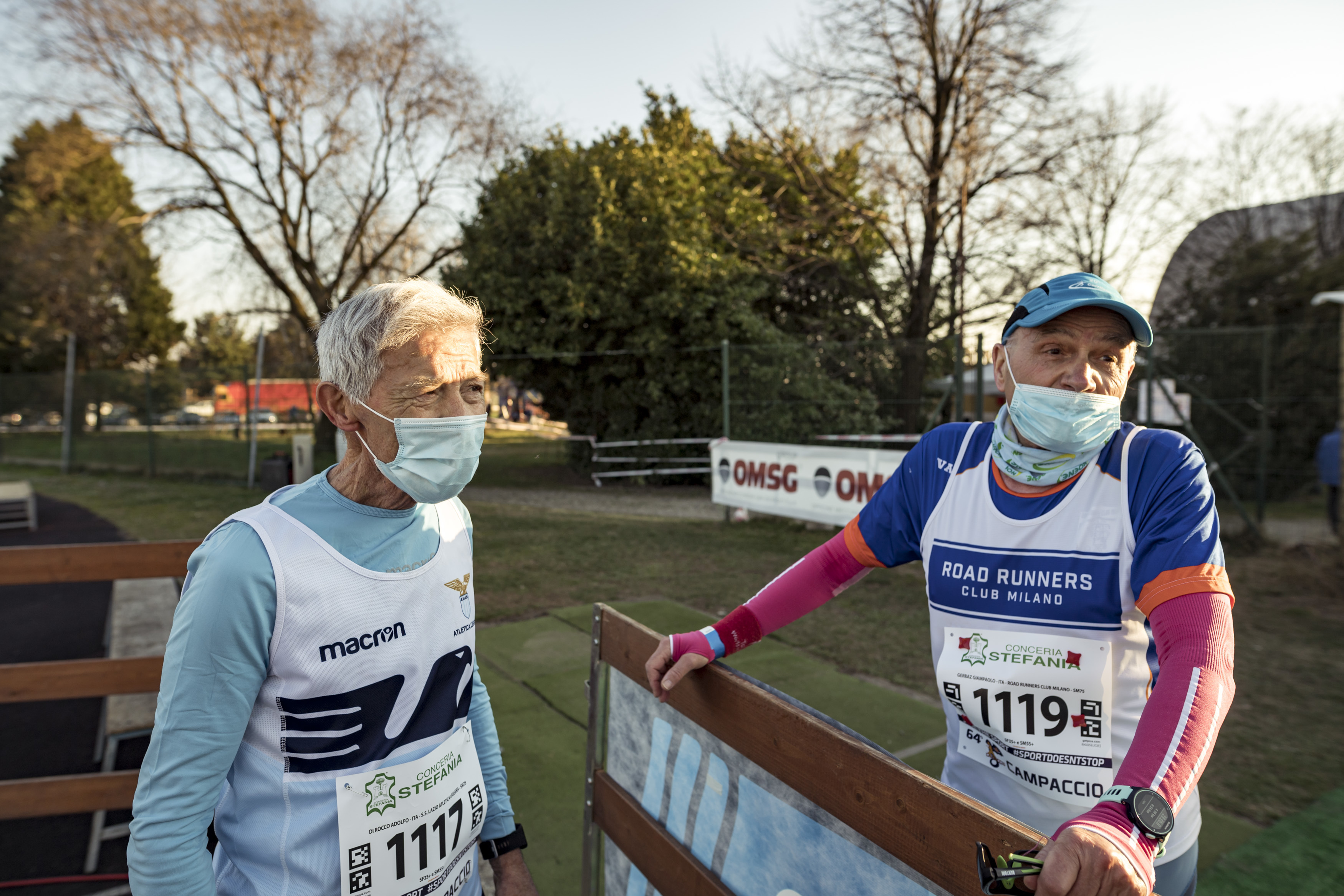
Giampaolo and Adolfo, like all serious amateurs, aren’t competing for a finisher’s medal. The focus is on times and places. It’s racing that ignites a deeper passion. Club runners, amateurs, masters runners, whatever you want to call them, they are the next sub-group after elites, so it is only fitting that Italy decided to restart its racing scene for amateurs only, at a cross country race – an event that’s hard enough to make it niche.
Without competition for the past 13 months, many of us missed having a north star to focus on during those extra hours of training. Running teaches us that patience and dedication are the key to progression. Campaccio demonstrates competition for amateur runners is possible, even a year after Italy was in the news for dizzying infection rates. As Tito put it, “Zero risk isn’t possible, but we’ll make every effort our best.” Naturally, the proof will be in next week’s COVID figures for the town of San Giorgio Su Legnano. From what we saw, the race’s virtually faultless dedication to the protocols in place meant that the event went off smoothly.
Could this have been possible in a different sport? Certainly not an indoor version of athletics, as we saw at the Europeans. But for this level of athletics – taking place outdoors, with the committed club runner at its core – we say, yes. Running has taught these athletes that you can’t take shortcuts to succeed. Only an amateur truly understands that when it comes to running, as in life, you get out what you put in.
‘Come sempre per sempre’ is not only an ethos proven by the 64th Campaccio, but ‘as ever, forever’ is an ethos fitting to the sport of running too.